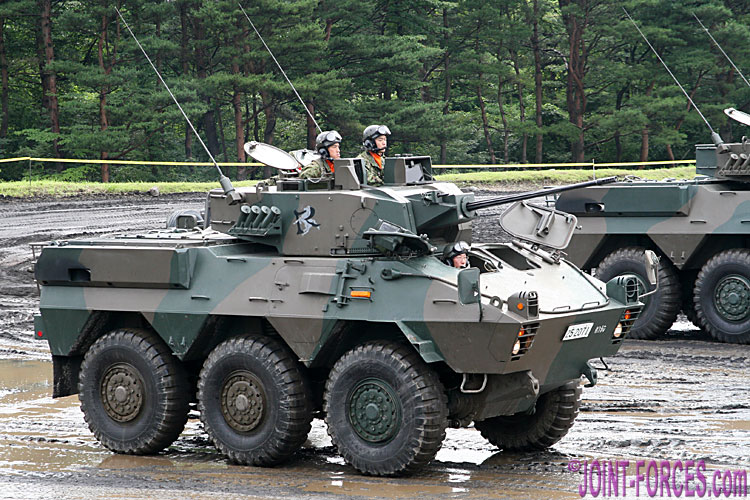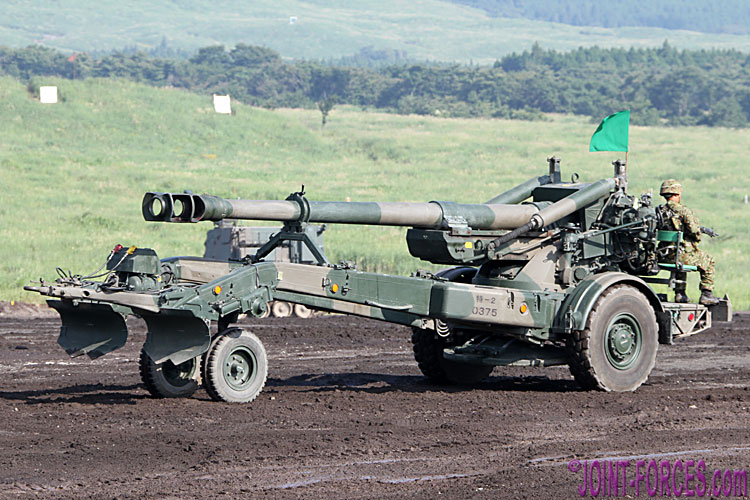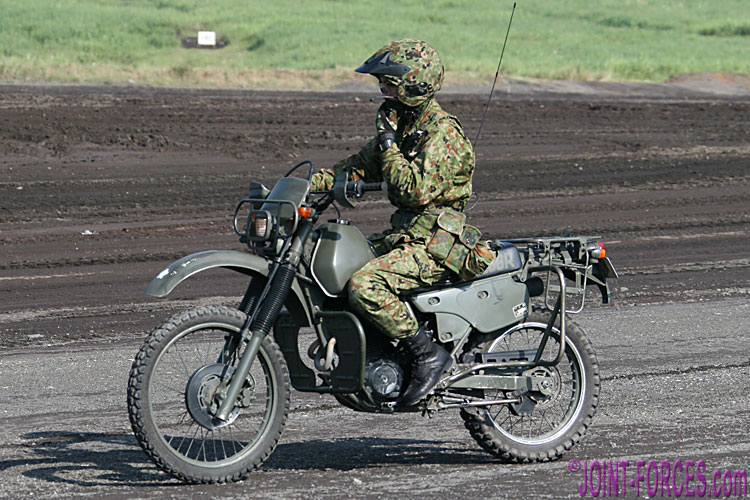In second part of his feature on the vehicles of the Japan Ground Self-Defence Force or JGSDF, Gordon Arthur focuses on the wheeled fleet.
The evaporation of the Cold War threat in 1989 did not herald an era of security for Japan. Instead, new regional challenges emerged that cause much consternation in the ‘land of the rising sun’. There is great concern over North Korea, a country that has admitted to kidnapping Japanese citizens from their own shores and secreting them away to the Hermit Kingdom. North Korea has pursued a ballistic missile and nuclear weapons programme too, with ballistic missiles routinely splashing down in the Pacific Ocean.

Up until 1998, Mitsubishi manufactured the Type 73 Small Truck based on the original Willys M38 – this particular variant mounts a Type 60 106mm recoilless rifle [© GA]

This Type 73 Small Truck, introduced in 1996 to replace the older jeep, is a militarised version of the well-known Mitsubishi Pajero – it is powered by a 124hp turbo-diesel engine [© GA]

A Toyota High Mobility Vehicle (HMV) exits a CH-47J Chinook helicopter – introduced in 1993, the HMV is similar in appearance to the HMMWV and is powered by a 150hp 4.1-litre turbo-diesel engine [© GA]

One weapon system based on the Toyota HMV is the Middle-Range Multipurpose Missile (Chu-MPM), which is an antitank missile system – introduced in 2009, the missiles employ semi-active laser homing or infrared imaging [© GA]
As the accompanying photos reveal, Japan has an extremely well-equipped and capable army…or rather self-defence force!
{ images © Gordon Arthur, unless noted }
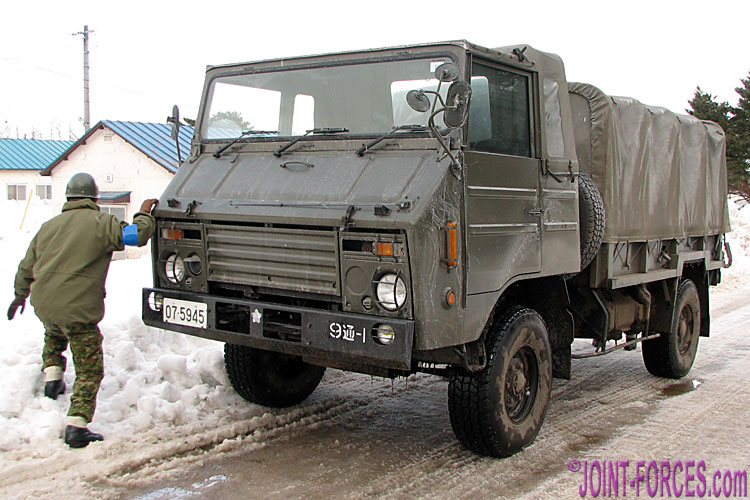
Known as a Type 73 Medium Truck, this example from the 9th Signals Battalion was seen in northern Japan – the vehicle built by Toyota offers a 2-ton payload [© GA]
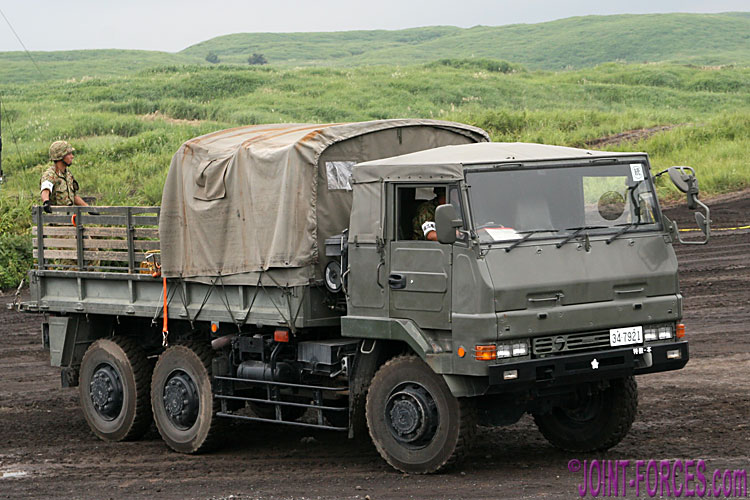
The Type 73 Large Truck of 6×6 configuration, which is widely used throughput the JGSDF, is built by Isuzu – this is the facelift model that was introduced in 1999 [© GA]
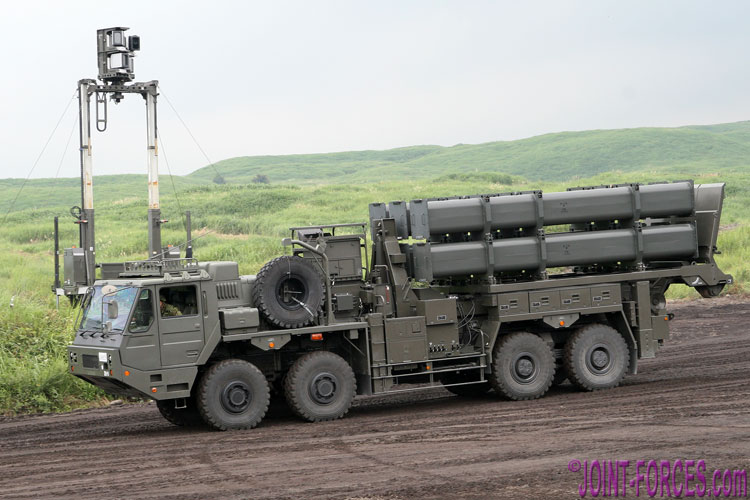
This is the Type 12 anti-ship missile system which has a reported range of 200km, plus far greater precision and the ability to perform midcourse corrections – the 8×8 truck chassis is built by Mitsubishi [© GA]
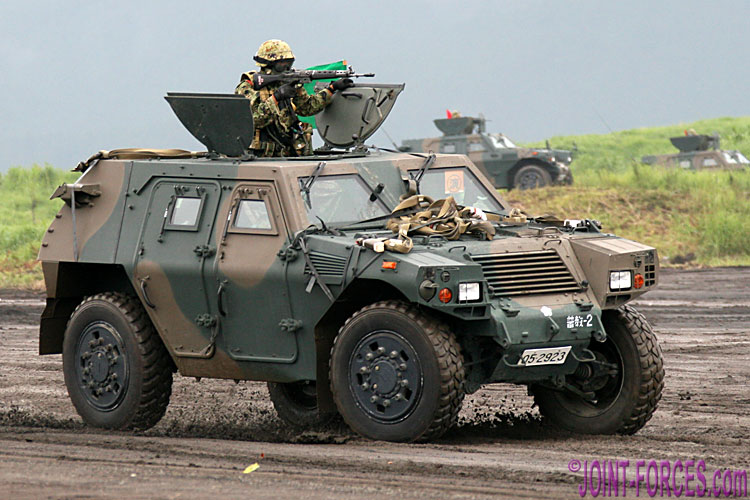
Built by Komatsu, the LAV entered service in 2001 – it is commonly fitted with a 5.56mm Minimi machine gun, although the commander is seen here aiming a 5.56mm Type 89 rifle [© GA]
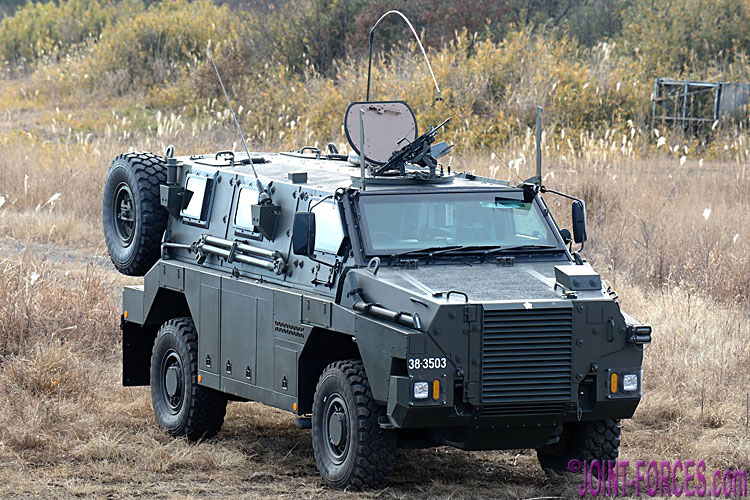
Japan possesses eight Thales Bushmasters painted in the JGSDF’s usual olive drab colour scheme – they are deployed in the JGSDF’s Central Readiness Regiment [© Masayuki Kikuchi]
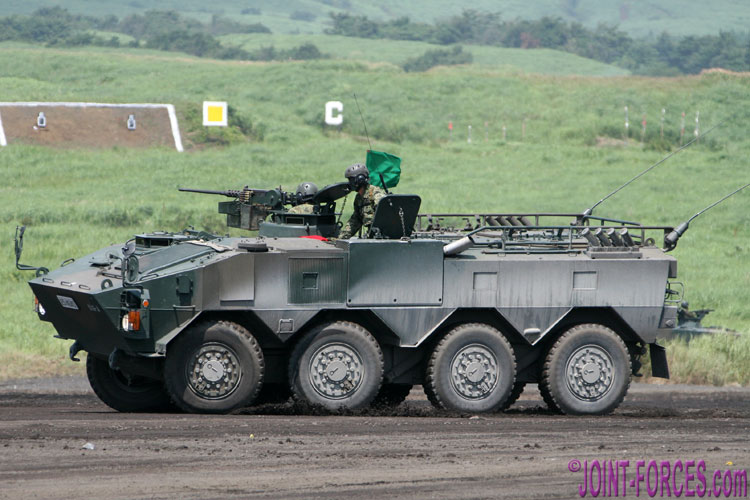
The 14.5-ton Type 96 Wheeled Armoured Personnel Carrier (WAPC) entered service in 1996 – powered by a 360hp 6-cylinder diesel engine, this WAPC mounts a 12.7mm M2-QCB machine gun [© GA]
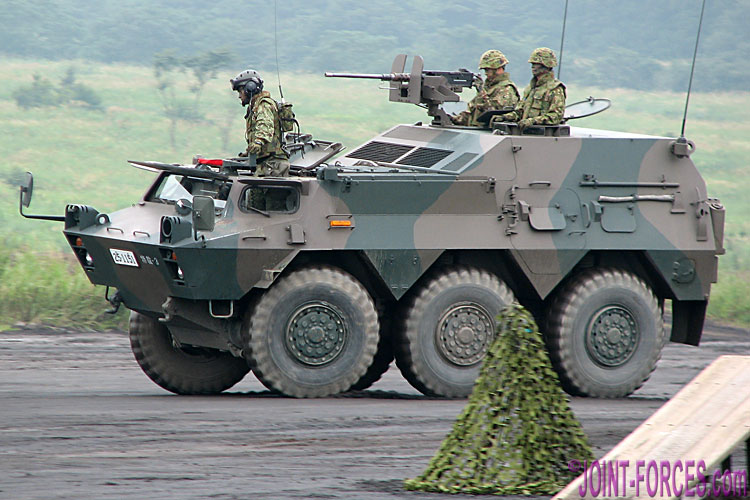
The 13.6-ton Type 82 Command and Communications Vehicle (CCV) was Japan’s first wheeled armoured vehicle since WWII – Komatsu built 232 up till 1999 [© GA]
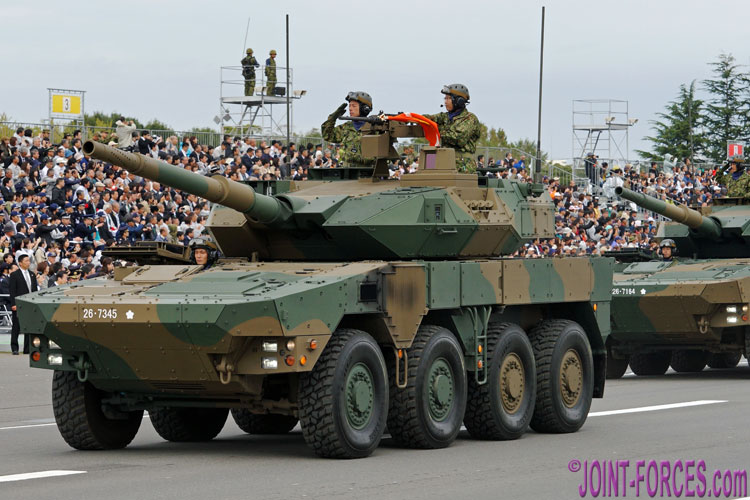
The Type 16 Maneuver Combat Vehicle represents a new direction for the JGSDF – a wheeled tank destroyer armed with a 105mm gun – the 26-tonne vehicle is designed for rapid strategic mobility [© Koji Miyake]


